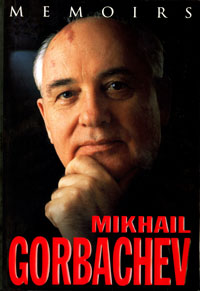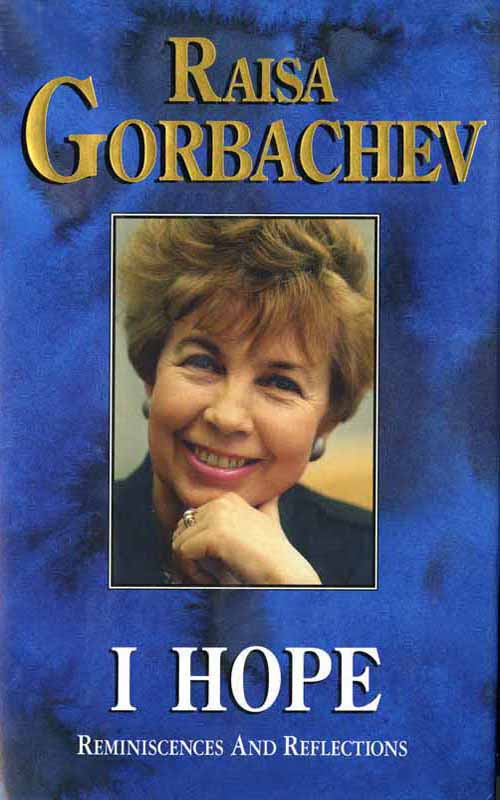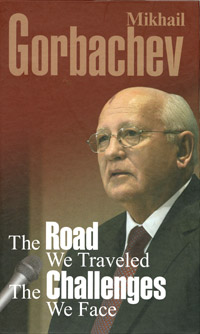9 October 2013
October 1993: The Rise of a New Russian AutocracyBy Lilia Shevtsova, Carnegie Moscow Center
Twenty years ago, on 2-4 October 1993, the Russian elite resorted to bloodshed in their struggle for power. The events of those days were actually a civil war, even if only within the boundaries of a single city – Moscow. Having brought back the violence factor into politics, they did not just come as a “birth trauma” for Russian society. They paved the way for the return to an authoritarian system of governance in Russia, thus predetermining the country’s current trajectory. Too many events of those tragic days remain unclear, and many are unlikely to become clear in the near future. After all, those willing to suppress the truth are still alive today. Investigation results remain classified. For instance, it is still unclear how many people got killed in those fateful days. According to official sources, during October 3-4, 147 people were killed and 372 injured; but eyewitnesses speak about hundreds and thousands who were killed and injured. It also remains unclear who gave the orders to shoot at unarmed people; who were the snipers shelling at them; and who orchestrated provocations and incited to violence on both sides. Finally, why options of a peaceful resolution of the conflict between the two branches of government, the Supreme Soviet and the President, were not used? Today, however, attention is drawn to something else: the Russian audience when discussing the anniversary of the tragedy once again looks for the root causes in the behaviors and ambitions of its main characters – Yeltsin, on the one hand, and Khasbulatov and Rutskoi, on the other – and in their mutual dislike, or in the clash between the reformers and the revanchists the two leaders personified. This view of history – solely through the prism of actions by individuals – suggests that we have not abandoned the personalist approach to politics, seeing it primarily as actions by leaders and politicians, rather than institutions. Taking this view further leads to a conclusion that confrontation in Moscow could have been avoided had there been other people in the place of Yeltsin, Khasbulatov and Rutskoi. This is absolutely wrong! The confrontation of 1993 and the preceeding two-year long confrontation between the two branches of government, were inevitable. They resulted from the emergence of institutions bent solely on autocratic rule. Of course, the lack of institutional thinking on the part of the emerging Russian elite and its drive to seize monopoly on power were contributing factors as well. It is possible that bloodshed and violence could have been avoided had Yeltsin and Khasbulatov shown the ability to negotiate, as they had done before the confrontation, when they had challenged the federal center acting as one team. However, the stand-off was clearly unavoidable, as it had structural roots. In fact, the survival of the Supreme Soviet and the Congress of People's Deputies, an absolutely weird institution, which both were leftovers of the Soviet state, but most importantly, the constitutional recognition of the Supreme Soviet's monopoly on power, were the factors that led to an institutional conflict with the popularly elected president. And when Yeltsin, in November 1991, was entrusted with emergency powers (for one year) to push through the reform, a conflict between him and the Supreme Soviet became unavoidable, as both sought to consolidate and maintain control over political and financial resources. The conflict could have been at least less severe had there been emerging viable political parties, or vibrant civil society in Russia. They would have mediated political conflicts and facilitated the building of horizontal political structures. However, there was no time and no willingness on the part of the political class, including liberals and democrats, to move towards the rule of law state rejecting a monopoly on power, for a more complex political society to take shape. All political ambitions, interests, and drive in those crucial two years were channeled either in support of the Supreme Soviet or in support of the President. By the end of 1992, a “dual government” system had taken shape and the confrontation between the Supreme Soviet and the President became inevitable. It may be asked, Was there really no other way out? In theory, there was one – in the form of a "zero option", suggested by some political figures and implying the adoption of a new Constitution. Such Constitution would have eliminated the duality of power, re-distributing powers between the parliament and the president and providing for re-election of both branches of government. Neither of the two sides embraced the zero option; both launched preparations for the ultimate showdown. As early as in the spring of 1993, Yeltsin tried to get rid of the Supreme Soviet by introducing the “emergency rule”, i.e. by staging a presidential coup, which failed. In the summer of 1993, it became clear that Russia was relentlessly heading towards an open confrontation between the two branches of government. However, it was the president and his team who not only launched attempts at removing the parliament, but also had the opportunity to use force to achieve their goal. On September 21, 1993, in a much-anticipated move, Yeltsin issued Decree No. 1400 ("On a Phased Constitutional Reform in the Russian Federation") and took a decision to dissolve parliament, introducing a presidential rule in the country. Leaders of the Supreme Soviet decided not to give in. Vice President Rutskoi was sworn in as President of Russia. Deputies of the Extraordinary Congress of People's Deputies, totaling 638, gathered at the White House. They refused to obey Yeltsin’s orders to disband. On September 25, a siege of the White House was started by security forces loyal to Yeltsin. On the same day, representatives of the moderates (including Yavlinsky, Zorkin, Lipitsky, and Yegor Yakovlev) proposed a way out of the crisis, which was to return to the situation before the publication of Yeltsin’s decree, with subsequent presidential and parliamentary elections scheduled for December 1993. Neither the Parliament, no the President supported the idea. Talks were started several times between the two sides, including with the mediation of Patriarch Alexy II; all attempts failed. The two sides proved to be incapable of compromise. And on October 2, clashes broke out between supporters of the Parliament, and the police forces on Smolenskaya Square. Spurred on by Rutskoi and Khasbulatov, thousands of their supporters tried to storm the building housing of the Moscow Mayor's Office – the first blood was spilled. Later in day, the opposition tried to seize Ostankino TV Center complex. This time, there were numerous casualties. On the same day, Yeltsin introduced a state of emergency in Moscow. And on October 4, tank shelling of the White House started. Particularly noteworthy is the fact that despite persistent prodding by Yeltsin, leaders of law enforcement agencies did not agree to storm the White House, a stronghold for the Supreme Soviet and Congress Deputies. At some point, during the October 3-4 days, Yeltsin and his team were on the verge of losing control of the situation. Yeltsin was forced to go to the Ministry of Defense to plead the generals for help. He wrote candidly about it in his "Memoirs of the President." "I saw that the army... was not able to immediately start defending Moscow. " The President rushed to persuade of Alpha and Vympel special forces elite units, but they initially refused to participate in the attack on the White House. The tide was turned by Yeltsin 's security chief, Alexander Korzhakov, who took charge of attacking the Parliament and found three infantry combat vehicle crews who agreed to take the job. Of course, later Yeltsin himself, and Putin after him, did everything to create security forces who would not hesitate carrying out orders of the Supreme Commander. In fact, according to eyewitnesses (in particular, Poltoranin and Korzhakov), during the most crucial moments when the White House was shelled, Yeltsin himself, was sleeping in the Kremlin, having brought himself into a notoriously known state. And there were two helicopters outside the Kremlin to provide an emergency exit for the president... In short, no one at the time was sure how things would end. In my book " Boris Yeltsin’s Regime," I cite some of the witnesses of those events. Here's what an FSB Major, one of the participants in those events, said then to Leo Segal, a correspondent with Obshchaya Gazeta: "Few people know that on October 4, most Alpha troops refused to storm the House of Soviets even after the presidential “pitch". Somehow they found volunteers... Others stopped outside Krasnopresnenskaya metro station to wait and see. Among themselves they discussed that, "The fact is if we turn the guns now in the opposite direction, everything will change." In a word, Yeltsin just was lucky. " The shelling of the parliament and the removal of the political opponent allowed President Yeltsin and his team to eliminate every possibility of a potential enemy or opponent emerging in the future. A new constitution that Yeltsin himself edited was drafted and adopted in a referendum vote. It provided for the government to be personified by the President, who now had an absolute monopoly on power and was not accountable to anyone. Under Yeltsin's Constitution, more resources were concentrated by the President than by the Russian tsar. Parliament was now to be elected according to new rules and could no longer pose any serious threat to the president. We often talk about 1991, the year when the Soviet Union collapsed, as the most important bifurcation point for modern Russia. In fact, the collapse of the Soviet Union left Russia with many development options open: either towards a rule of law state with political competition or towards a personalized power system. The options had been open for two years – until October 1993. It might seem that the emergence of confrontation between the President and the Supreme Soviet gave Russia a chance to create a competitive political environment and move towards a system of checks and balances. But in fact, the two branches of government by seeking to wholly concentrate control in their hands, paved the way for a drift towards a new monopoly. The people comprising those institutions also played a role. Neither Deputies nor members of the Yeltsin team were ready for new rules of the game; they could not even think of mutual concessions (the very idea was abhorrent to them); they were not capable of seeking a compromise and used to take action along the traditional Soviet lines. There were also economic reasons behind the power struggle between the two branches of government: both camps sought control over the privatization process. The executive branch was closer to the coveted levers of control over the state property, which obviously irked leaders of the Parliament. But at the same time, it was the presidential team’s drive to enjoy unrestrained control of the state and property which explains why the removal of the Supreme Soviet was its top priority throughout 1993. In 1993, Russia not only left behind the period of dual government. The times of uncertainty were over, and the country chose its path of development, creating a new autocracy. Yeltsin and his team justified the use of violence and the shelling of Parliament as a necessary precondition for launching a sweeping liberal reform. But in fact, once autocracy was consolidated, reform stalled altogether. As for the hopes for democracy, what democracy can emerge after tank shelling of the Parliament, even the one consisting of traditionalists? Today, looking back at the destruction of the Supreme Soviet, the events that immediately followed, and the consequences of those events, we can bluntly say: in September-October 1993, Boris Yeltsin and his team staged a coup which returned Russia to autocracy. However, during the Yeltsin era, political life in Russia still kept some elements of political pluralism and political struggle – due to a gradual loss of support for the President among the public, and the former’s reluctance to use “hard power”. Still, the autocracy machine was already there, waiting for a new driver. Yeltsin’s successor used the opportunities Yeltsin’s constitution granted him to much greater effect. It was Putin who became the leader who took full advantage of the outcomes of the 1993 civil war. Translated by Konstantin Petrenko
Posted in Russian at the Carnegie Moscow Center web-site |
|
The XXI century will be a сentury either of total all-embracing crisis or of moral and spiritual healing that will reinvigorate humankind. It is my conviction that all of us - all reasonable political leaders, all spiritual and ideological movements, all faiths - must help in this transition to a triumph of humanism and justice, in making the XXI century a century of a new human renaissance.
|
|
Русский |




